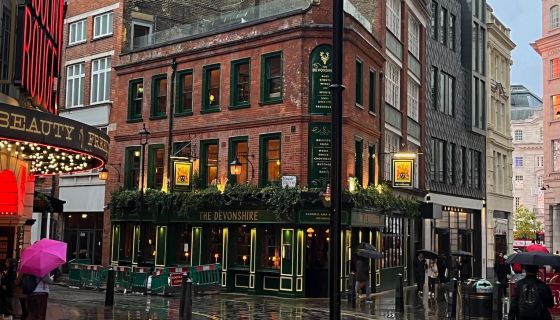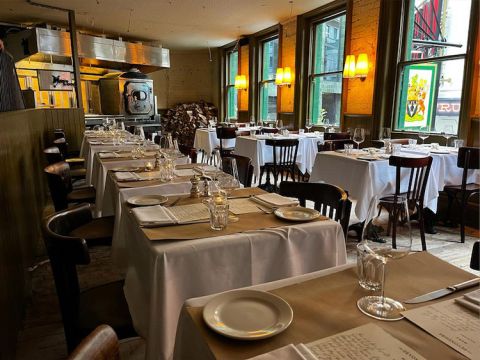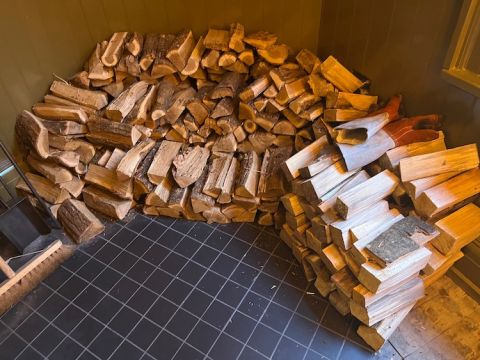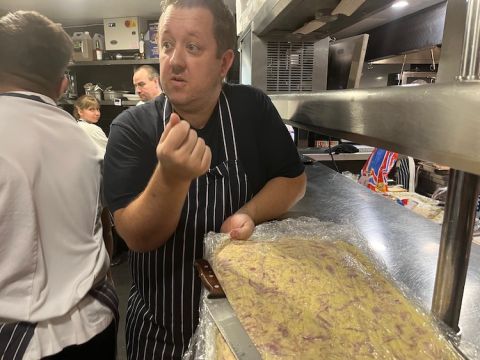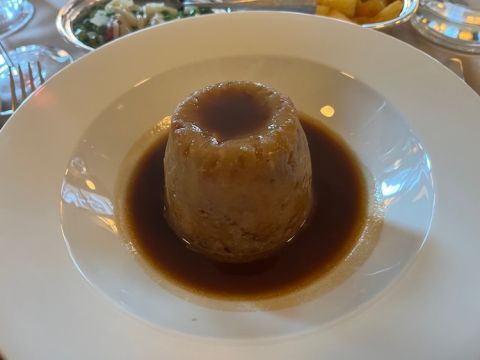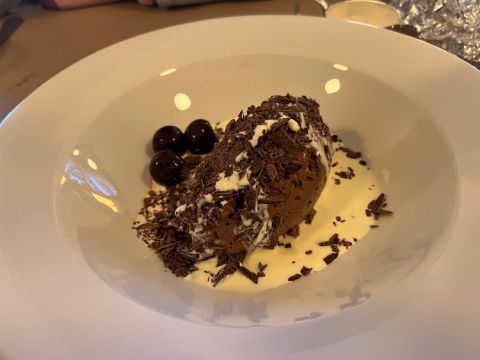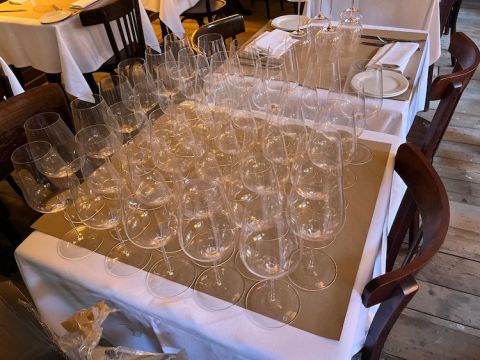‘It’s got to be big and it’s got to be central.’
These were the two conditions which Oisín Rogers laid down to Charlie Carroll when they first began to discuss the prospect of a pub with a restaurant attached two years ago. Together they bring expertise in operating both.
Rogers was such an integral part, the omnipresent Irish host, of The Guinea Grill in Mayfair that everyone assumed that he had to be more than a salaried employee at this popular haunt. This turned out not to be the case.
Carroll, 40, is perhaps the more experienced in the restaurant world. Having spent a few formative years working for the Wahaca group of Mexican restaurants, Carroll went on his own with what proved to be a highly successful formula. His group of Flat Iron restaurants, which aim to serve almost everybody’s favourite dish of steak and chips at an affordable price, now number 13 – or maybe 14, he wasn’t quite sure. He can perhaps be excused this lack of precision for he has handed over day-to-day management of Flat Iron to Tom Byng, founder of the Byron burger chain. For the past two years Carroll has had his hands full with the opening of The Devonshire – which is indeed both big and central.
The Devonshire is on the corner of Denman Street, an acute angle opposite Zedel, and no more than 100 yards from Piccadilly Circus. It is vast, over 4,000 square feet, with cooks and customers seemingly everywhere one looks, including spilling out on to the pavements.
In the basement is a butchery run by the highly experienced George Donnelly, who is in charge of a cold store where rows of beef sirloins are gradually changing colour as they age and develop flavour. Next door is a team of bakers quietly working away producing all the bread, notably the Parker House rolls, and desserts for the various floors. When the Devonshire is at full capacity, it will employ 100.
The ground floor of The Devonshire, which began life in 1793 and last traded as an outpost of Jamie Oliver’s restaurant group, has been reconstituted as a pub and Carroll would like every visitor to pay particular attention to the handiwork involved in restoring the mirrors. Arguably more attention should be paid to the vast number of draught beers and ciders – in particular to the Guinness. Here, it is possible to enjoy this fabulous drink as its creators intended: not chilled but poured slowly and served deliciously at room temperature.
Some food is served on the ground floor but it is definitely of a pub nature for the moment: well-made cheese-and-ham toasties and chips. The Devonshire’s pedigree is more evident in the Grill Room on the first floor.
As you enter, you begin to appreciate the special nature of this corner building. The row of windows on the right give a glimpse of Piccadilly Circus. But most eyes will be on the vast log-burner whose embers feed an open range to its left at the end of the room, and the pile of neatly chopped logs stacked in the corner.
Welcome to London’s first asado, where the food is cooked entirely over wood embers.
Carroll admitted that it had been harrowing at times, assuring everyone from the landlords to numerous representatives of Westminster Council that the process would work and would be safe. Simply, the logs are burnt and then the ingredients are cooked over the embers. It is this process that has made a name for the likes of Asador Etxebarri in Spain, Burnt Ends in Singapore and Firedoor in Sydney, all of whose chefs have been consulted by Carroll and Rogers.
Then there is the chef, the hugely talented if modest Ashley Palmer-Watts, seen above with the filling of those pub sandwiches. Carroll first met Palmer-Watts while at The Fat Duck in Bray. But it was when he moved to Heston Blumenthal’s nearby pub, The Hind’s Head, that Carroll grew appreciative of what Palmer-Watts and his team were turning out, in volume. The pub could serve 300 customers a day, and on a daily basis.
Palmer-Watts then moved on to be head chef at Dinner by Heston Blumenthal in the Mandarin Oriental Hyde Park but left there two years ago. He has been cooking in The Devonshire’s development kitchen since February. But the 230- year-old building has its very own challenges. The main kitchen is along one side of the Grill Room, up some stairs and behind a curtain, so my lunch there was interrupted by shouts of ‘table such-and-such ready to go’. It will also eventually somehow have to serve The Claret Room, a larger dining room up a further flight of stairs. But a talented team will presumably not let such details deter them.
The handwritten menu is clear and divided into starters, dishes from the grill, dishes from the kitchen, and sauces and side dishes underneath. It looks quite heavily meaty and masculine – perhaps not a surprise given that the partners (Rogers, Carroll and Palmer-Watts) are three men and it is the middle of November. But I feel that this is an area that will require attention.
My guest and I decided to test the kitchen as well as Palmer-Watts’ grill and began by sharing a first course of potted shrimps with Melba toast. These were excellent, with plenty of mace and topped with thick butter. The toast was thin and crisp. I then ordered the beef cheek and Guinness suet pudding and my guest the Ibérico pork chop with duck-fat potatoes and a dish of peas with onions and bacon. We failed to order one of the half-dozen sauces which proved to be a mistake as the pork chop was dry.
The suet pudding, however, was excellent and reminded me of when I was a sixth-former at Manchester Grammar School and we were allowed out of school for lunch – although suet puddings then were considerably less than The Devonshire’s £26.
I subsequently wondered whether I had ever tasted a chocolate mousse as good as The Devonshire’s. It was light but tasted intensely of chocolate, its richness mitigated by three alcoholic cherries on the side and single cream. When I complimented Palmer-Watts later, he smiled. ‘The recipe is a bit like building a house. You just keep adding layer upon layer of different ingredients all the time until you get the right consistency.’ The wine list is good, the JR glasses even better.
Palmer-Watts is extremely proud of the grill, of which he gave us a tour, explaining in particular the Halton cooling system which every morning at 3 am ‘washes down’ the embers thereby ensuring that accidents don’t occur. I toured the rest of the kitchen and tried to take in the computer system which links whoever’s on the grill with the kitchen brigade, thereby ensuring all the orders are compiled correctly without involving any paper.
I visited The Devonshire on its third day when they were not yet charging for the food. (I paid a bill of £47 for our drinks.) I was reminded of Jancis’s comments on my early days as a restaurateur not that far away on Greek Street, that my complexion in those days closely matched the colour of the green walls. I see now what she meant when I looked at Rogers’ and Carroll’s faces. L’Escargot had four dining rooms serviced from a basement kitchen over 5,000 square feet. The Devonshire will be a similar size once its roof terrace opens, but with more moving parts – a butchery and a bakery as well as the pub. And it will be open seven days a week, for lunch and dinner.
But if there is any couple who can pull this off it is Rogers and Carroll, who met for the first time about 10 years ago when Carroll innocently asked Rogers whether he knew of anywhere he could roast an ox. They pulled off this feat three months later at the pub Rogers was then managing before his transfer to The Guinea Grill.
The Devonshire 17 Denman St, London W1D 7HW; tel: +44 (0)20 8161 0396

